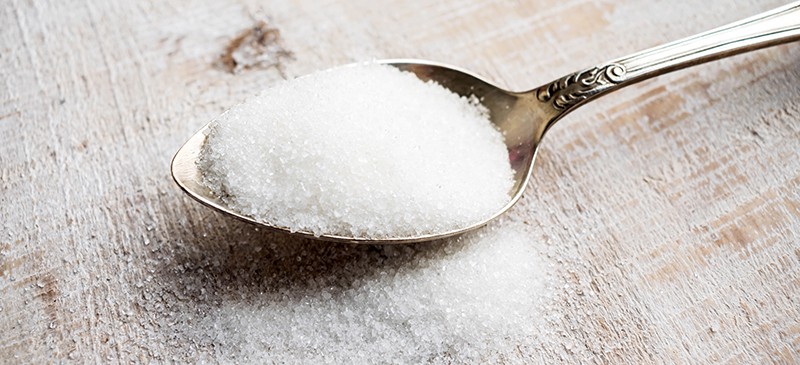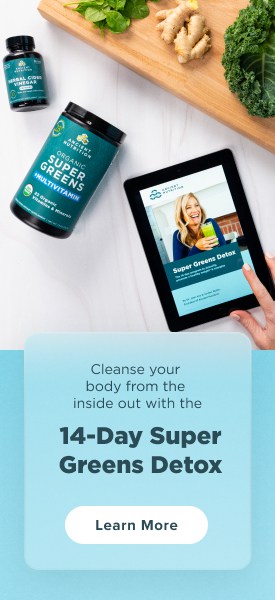This Dr. Axe content is medically reviewed or fact checked to ensure factually accurate information.
With strict editorial sourcing guidelines, we only link to academic research institutions, reputable media sites and, when research is available, medically peer-reviewed studies. Note that the numbers in parentheses (1, 2, etc.) are clickable links to these studies.
The information in our articles is NOT intended to replace a one-on-one relationship with a qualified health care professional and is not intended as medical advice.
This article is based on scientific evidence, written by experts and fact checked by our trained editorial staff. Note that the numbers in parentheses (1, 2, etc.) are clickable links to medically peer-reviewed studies.
Our team includes licensed nutritionists and dietitians, certified health education specialists, as well as certified strength and conditioning specialists, personal trainers and corrective exercise specialists. Our team aims to be not only thorough with its research, but also objective and unbiased.
The information in our articles is NOT intended to replace a one-on-one relationship with a qualified health care professional and is not intended as medical advice.
Is Fructose Bad for You? Here’s What You Need to Know
September 3, 2019

Fructose is one of the most controversial forms of sugar available. With more and more research emerging claiming it could contribute to obesity, heart disease and liver problems, many have even called for it to be banned or restricted in some parts of the world.
Believe it or not, this type of sugar is likely lurking in many of the foods you consume on a daily basis and is found in far more sources than just sweet treats or candy bars.
So, is fructose better than sugar? Is fructose bad for weight loss, and is the fructose in fruit bad for you?
This article will take a closer look at this simple sugar, including what it is, where it’s found and some key differences between fructose versus sucrose.
What Is Fructose?
According to Merriam-Webster, the official fructose definition is “a crystalline sugar that is sweeter and more soluble than glucose.”
Fructose, also known as levulose or D-fructose, is found on its own in many food sources, or paired with other simple sugars in some ingredients. For instance, glucose plus fructose equals sucrose, also known as table sugar.
Like glucose, fructose sugar is a type of simple sugar, or monosaccharide, which means it can act as a reducing sugar. And similar to other simple sugars, the fructose structure is made up of a linear carbon chain with hydroxyl and carbonyl groups.
Despite the similarities between fructose and glucose, however, the two are metabolized very differently in the body.
In fact, when consumed in high amounts, some research suggests it could contribute to insulin resistance, liver disease and high cholesterol.
How Is It Bad for You?
Compared to glucose, fructose is metabolized and used differently by the body.
Glucose is the main source of energy for the body, and it’s used directly by the cells for fuel. Fructose, on the other hand, must be metabolized first by the liver.
Eating high amounts can overload the liver, impairing its function and causing it to turn excess amounts into fat.
Because of the issues associated with fructose metabolism, studies show that going overboard on this simple sugar can increase the risk of non-alcoholic fatty liver disease as well as other health problems like insulin resistance and high cholesterol levels.
Regular consumption can also negatively impact several other aspects of health. For example, it can increase the production of uric acid, which may increase blood pressure and trigger symptoms of gout.
It could also cause leptin resistance, which can contribute to overeating and weight gain.
Fructose malabsorption, also known as fructose intolerance, is another issue that occurs when your body is unable to break down the sugar efficiently. Caused by a number of different factors including stress, irritable bowel syndrome or chronic inflammation, malabsorption can trigger digestive issues like nausea, bloating, gas and stomach pain.
Related: What Is Invert Sugar?
Top 10 Sources and Types
Check out these 10 common sources that might be sitting on your shelves.
1. Fruit
Most of the natural sugar in fruit is actually fructose. However, this type of fruit sugar is not actually harmful, and fruit can typically be enjoyed in moderation as part of a healthy, well-rounded diet.
This is because fruit is also rich in fiber, plus other vitamins, minerals and antioxidants that your body needs.
Additionally, compared to processed foods with added sugars, you would also have to consume quite a bit of fruit to reach unsafe levels of fructose in the body.
2. Soda
Soda is often pumped full of high fructose corn syrup (HFCS), along with many other additives and artificial flavorings.
This common sweetener is made from corn syrup, and it contains varying amounts of both glucose and fructose.
One key difference between HFCS versus sugar is that the glucose and fructose molecules are bound together in sucrose but not in HFCS.
Like other forms of added sugar, some research suggests HFCS may contribute to metabolic syndrome and obesity, along with several other serious health problems.
3. Juice
It’s no secret most fruit juice is already high in sugar.
However, many food manufacturers take it a step further and add extra high fructose corn syrup to help dial up the sweetness and flavor.
Making your own juice at home or switching to low-sugar alternatives like infused water, herbal tea or kombucha is a great way to skip the simple sugars.
4. Convenience Meals
Frozen meals and boxed dinners have become a staple ingredient in many households across the country.
What most people don’t realize, however, is that many of these foods are loaded with additives, preservatives and, yes, even added sugar.
5. Condiments
Besides what you put on your plate, what you put on your food can also impact your intake of this simple sugar.
This is because certain condiments are actually jam-packed with fructose, typically in the form of high fructose corn syrup.
In particular, ketchup, barbecue sauce, relish, jams and jellies are all usually high in added sugars and HFCS.
6. Diet Products
Many products advertised as “low-fat” or “low-calorie” are actually pumped full of this form of simple sugar.
In fact, manufacturers often add extra sugar in low-fat foods to enhance the flavor and produce a more palatable product.
Some also use sugar alternatives like crystalline fructose, which help boost the sweetness while also reducing the amount of sugar in a product.
Low-fat dairy products, salad dressings and baked goods are a few of the most common sources of hidden fructose, so keep an eye out and check the label carefully.
7. Granola Bars
Despite being marketed as a “healthy” snack, most store-bought granola bars are loaded with added sugar.
The solution? Try making your own granola at home using nutrient-rich ingredients like nuts, seeds and oats!
Check out this recipe for homemade granola bars for an idea to help get you started.
8. Candy
Candy and candy bars are two of the most common HFCS foods on the market.
Most contain high amounts of fructose, which is why it can often be spotted among the first few ingredients on the label.
9. Canned Fruit
Not only does fruit naturally contain fructose, but many fruit cocktails are also canned in syrup and sweetened with HFCS to add extra flavor.
For this reason, filling up on fresh fruit is a much better option to keep added sugar consumption in check.
10. Breakfast Cereal
It may seem like a healthy way to kick off your morning, but did you know most breakfast cereals are packed with more added sugars than some desserts?
Next time you’re shopping for cereal, check the label and look for a brand with minimal amounts of added sugar. Alternatively, give oatmeal a try.
Fructose vs. Glucose
Fructose and glucose are both simple sugars and are the two main components of sucrose. Sucrose, also known as table sugar, is a disaccharide found in sources like cane or beet sugar.
Additionally, although their chemical structures are different, the fructose formula is virtually identical to the formula of glucose. In fact, both are comprised of a carbon chain, along with hydroxyl and carbonyl side groups.
That being said, there are several distinctions that set glucose versus fructose apart.
The main difference between glucose and fructose is the way they are each used by the body.
Glucose is considered the main source of energy for the body, which can be used directly by the cells. Fructose, on the other hand, must be metabolized first by the liver, which can cause issues when consumed in high amounts.
Another notable difference between glucose and fructose is their respective effects on blood sugar.
Unlike glucose, fructose does not increase blood sugar or insulin levels. However, some studies have found a connection between consumption of fructose and diabetes, which may be caused by a reduction in insulin sensitivity.
How to Limit Intake
Fructose is found in a number of natural food sources and even contributes to the sugar content in fruit.
However, that doesn’t mean you need to opt for low-fructose fruits or stock up only on the lowest sugar fruits next time you hit the grocery store.
Even high-sugar fruits contain minimal amounts of fructose. This means that, unless you have fructose malabsorption or another digestive disorder, you would have to chow down on quite a bit to reach unsafe levels of this simple sugar.
Unlike processed foods high in added sugars, fruit also contains a wealth of other important nutrients as well. Most fruits are especially high in fiber, antioxidants and vitamin C, making them a worthy addition to any balanced diet.
Therefore, instead of eating only low-sugar fruits or limiting your intake of fructose from natural food sources, it’s best to scale back on added sugars from unhealthy foods instead.
Including a variety of nutritious whole foods in your diet is a great way to keep sugar consumption under control. Similarly, be sure to keep your intake of processed foods like sugar-sweetened beverages, frozen foods, canned fruit and sweets to a minimum.
Checking the ingredients labels of your favorite foods is another easy way to search for hidden sugar. If you spot agave syrup, high fructose corn syrup, molasses, coconut sugar or sorghum within the first three ingredients on a label, it’s best to skip altogether.
Risks and Side Effects
Wondering exactly how much fructose per day is safe? Although the average intake is around 60–70 grams per day, most health authorities recommend restricting added sugar consumption to no more than 25 grams daily.
As a general rule of thumb, limiting your intake of processed foods and sweets can help substantially reduce added sugar consumption.
However, for those with a hereditary fructose intolerance or sugar intolerance, cutting out fructose altogether, even from healthy foods like fruits, may be necessary to prevent intolerance symptoms.
If you experience any adverse side effects after consuming fructose foods, or if you think you may have an intolerance, be sure to talk to your doctor to determine the best course of treatment for you.
Final Thoughts
- Fructose is a type of simple sugar that is found along with glucose in table sugar.
- Unlike glucose, it’s metabolized solely by the liver and can cause several adverse side effects when consumed in high amounts.
- It’s found in a variety of different food sources, including processed foods, granola bars, breakfast cereals and sugar-sweetened beverages.
- It’s also found naturally in fruit. However, this type of simple sugar is not considered harmful because it’s present in small amounts and paired with plenty of fiber, vitamins and minerals.
- Cutting back on your intake of processed foods and filling your diet with healthy, whole-food ingredients instead is a simple way to reduce your intake of this simple sugar.












